A Buzzing Beehive of Stars
Globular clusters are among my favorite objects in the sky: ball-shaped collections of hundreds of thousands or even millions of stars held together by their mutual gravity. In most cases, the stars in them were all born at the same time, so they are also laboratories for scientists to study how stars age. This photo of M15 by Hubble Space Telescope shows just how multihued and tightly packed they can be; 100,000 stars call this globular cluster home even though it’s only 200 light years across. Located in the constellation of Pegasus, it’s bright enough to be easily seen in small telescopes, and I remember many a winter’s night peering at it through my own ‘scope when I was a young lad. However, it didn’t look like this!
Runner-up: Globular Cluster 47 Tuc in the Infrared
Two dozen of the finest views of our Universe from the past year.
I love astronomy. I have my whole life. Part of that is the wonder and awe it generates, learning about the Universe and our place in it.
But of course, there is great beauty in the skies as well. From our nearest neighbors to the most distant galaxies, the cosmos is a wonder to behold. Every year I collect my favorite pictures—chosen both for their beauty and their importance to science—and put them together in a gallery to delight your brain (you’ll find links to previous galleries at the end of this article). Picking only a few is always a herculean task, but I hope the ones on this list affect you the same way they did me.
Note: With some images, I’ve included a link to a “runner-up,” a great photograph from the past year similar to the one chosen; a little extra icing on the cake for you at the end of the year.
Digging Very, Very Deep Into a Nearby Galaxy
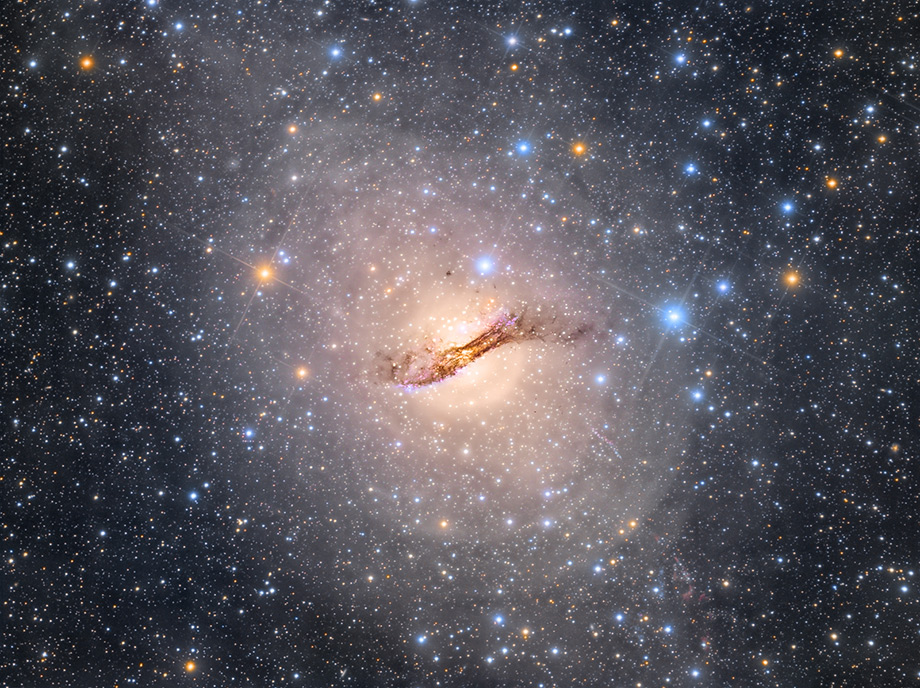
Photo by Rolf Olsen
The line between a professional and amateur astronomer has been narrowing for years and is now so thin it’s practically gone. Rolf Olsen is an “amateur” astronomer in New Zealand who uses a telescope with a 25 cm (10 inch) mirror to take astonishing images of the southern skies. This image of the nearby galaxy Centaurus A is the result of adding together exposures totaling an incredible 120 hours over 43 nights! The galaxy itself is a mess; it has suffered multiple collisions with other galaxies, creating massive chaos. The dark lane across the center, the huge shells of material around it, and the (barely visible to the upper left and lower right) jets of gas screaming out from the galaxy’s central black hole are all consequences of its violent past.
Martian Latte
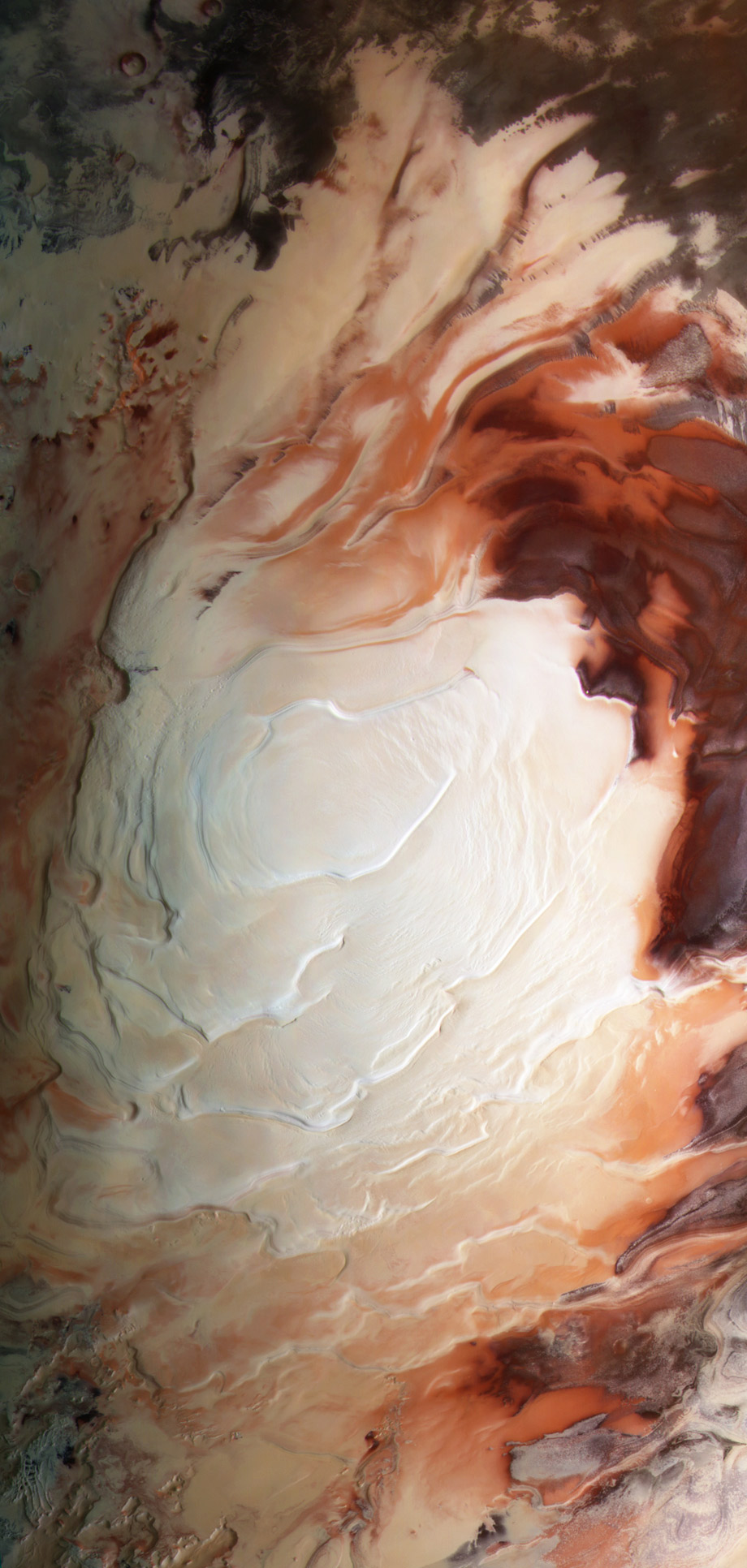
Photo by ESA/G. Neukum (Freie Universitaet, Berlin)/Bill Dunford
The Mars Express orbiter has been circling the fourth rock from the Sun for 10 years now, taking thousands of observations. Bill Dunford collected quite a few of those images and created this jaw-dropping mosaic of the south pole of Mars. It’s not quite what the eye would see; what’s shown as red is actually near infrared, invisible to us but easily seen by the camera on the spacecraft. Kilometers-thick water ice covers the pole, capped itself by a layer of carbon dioxide ice a few meters thick. That is mixed with the rusty dust eternally blowing in the Martian winds, creating what looks more like something you’d order at a coffee shop rather than the frigid nether regions of a nearby world.
Runner-up (what else?): Mars Express Image of the Martian North Pole
The Knight That Rules the Night
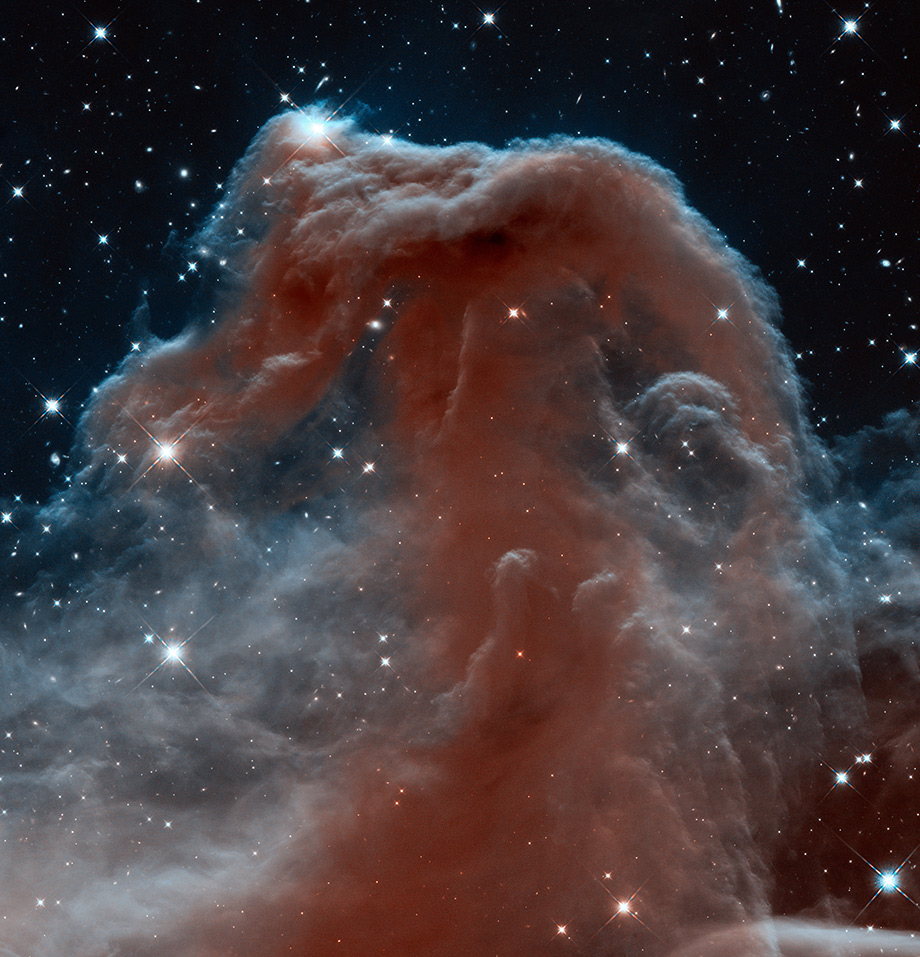
Photo by NASA, ESA, and the Hubble Heritage Team (STScI/AURA)
April 24, 2013, was the 23rd anniversary of the launch of the Hubble Space Telescope into orbit. To commemorate this event, the folks at the Space Telescope Science Institute released this image of the Horsehead Nebula, named for somewhat obvious reasons. Located just next to Orion’s belt, this cloud of dust and gas is a region where stars are forming. When viewed in visible light the Horsehead appears dark, a cosmic chess piece silhouetted against pink and red glowing gas. In infrared light, as in this image, the dust becomes visible, delicate billows of clouds surrounding baby stars just getting their start in the Universe. Better take a look while you can: In a few million years all this will be gone, eroded away by the fierce light of the nearby powerhouse star system Sigma Orionis.
Saturn, From High Above
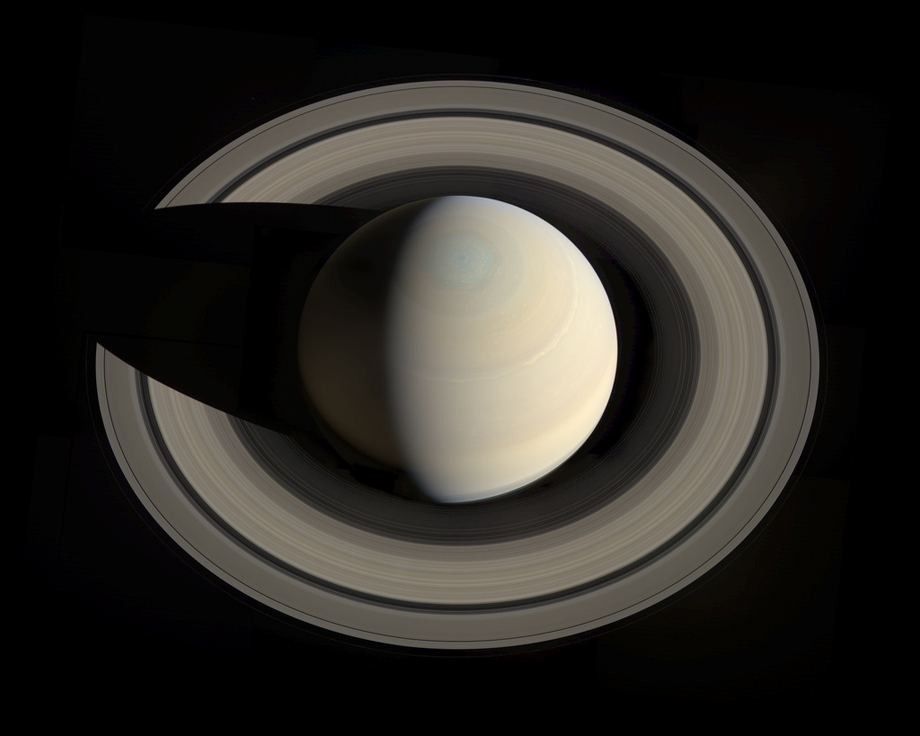
Photo by NASA/JPL/Space Science Institute/Gordan Ugarkovic
Did you know that all of the pictures from NASA’s Cassini Saturn probe are public? That means anyone can peruse the archive of raw images and use them to create their own pictures. Gordan Ugarkovic is software developer and something of a genius artist when it comes to image processing. The proof is in this staggeringly beautiful mosaic he created of Saturn seen from above its north pole. Composed of three dozen separate exposures, this near-true-color portrait has stunning detail. You can see the hexagonal north polar vortex, the remnants of a monster storm in the northern hemisphere, and of course Saturn’s magnificent rings, gaps and all. And as amazing as this is, you must see it in all its 4000x3200 pixel glory. And you’re welcome for your new computer desktop image.
Saturn, From Far Behind
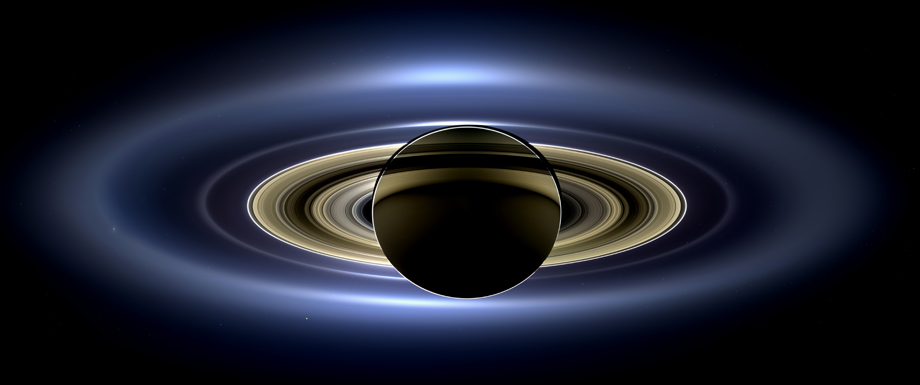
Photo by NASA/JPL/Space Science Institute
On July 19, 2013, the Cassini spacecraft moved into a part of its orbit where it was behind Saturn, the giant planet blocking the light from the distant Sun. Over the course of four hours Cassini snapped dozens of images in different filters, mapping out the entire planet, its moons and rings, and even distant stars in the background. The result is this jaw-dropping mosaic, which I had to shrink substantially to fit the width of this article. You must grab the full-res version, a bandwidth-choking 9000x3500 pixels in size. But it’s only in that image you can see the tremendous detail available … including a small spot, just a barely glowing ember, really, hanging below and to the right of Saturn’s disk. That meager dot, invisible in the image above and only barely glimpsed in the big version, is our entire planet. From a distance of 1.4 billion (900 million) kilometers, the Earth is reduced to a spark in the night sky, our hustle and bustle and worries and hopes and fears and soul-drenching loves and unfathomable hates and bloody wars and heartfelt charity, all compacted into a handful of pixels, a fuzzy blob containing all of humanity. The Universe is massive and cold and distant, but its beauty is inherent, and the joy of it, even when we seem insignificant, is that we can appreciate it at all.
A Dying Star Rages Into the Night
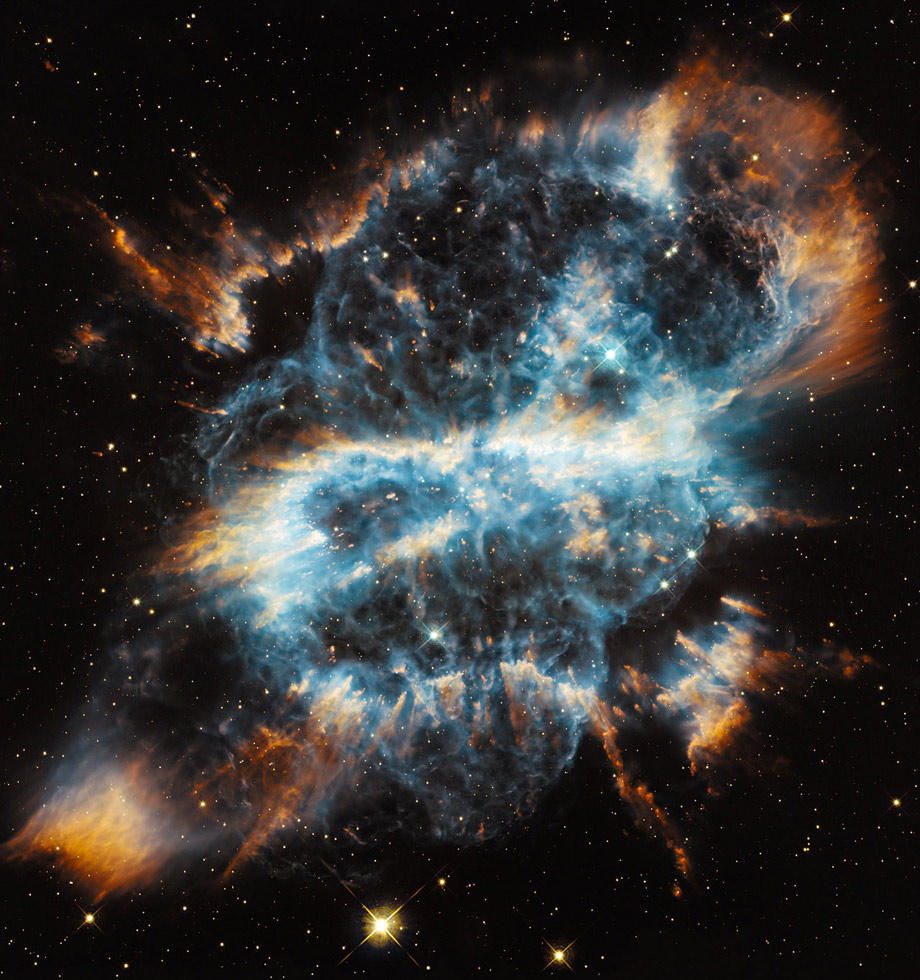
Photo by NASA, ESA, and the Hubble Heritage Team (STScI/AURA)
When stars die, they do it in style. This is NGC 5189, a glowing gas cloud seen by the Hubble Space Telescope. At the center is a white dwarf, the remains of what was once a star probably about twice the mass of the Sun. As it ran out of fuel, it expelled huge quantities of gas into space, exposing its dense core. White hot, spinning rapidly and possessed of a killer magnetic field, the white dwarf spewed out twin jets of energy and matter from its poles, energizing the surrounding material. However, the star is wobbling, so these lighthouse-like beams appear to carve out a gigantic S shape in the star’s former outer layers. At least, we think that’s what’s happening: This object isn’t completely understood, though that’s is the most likely explanation for this dramatic and lovely object.
Runner-up: Hubble’s High-Res View of the Ring Nebula
The Cold, Fiery, Dusty Arms of Andromeda
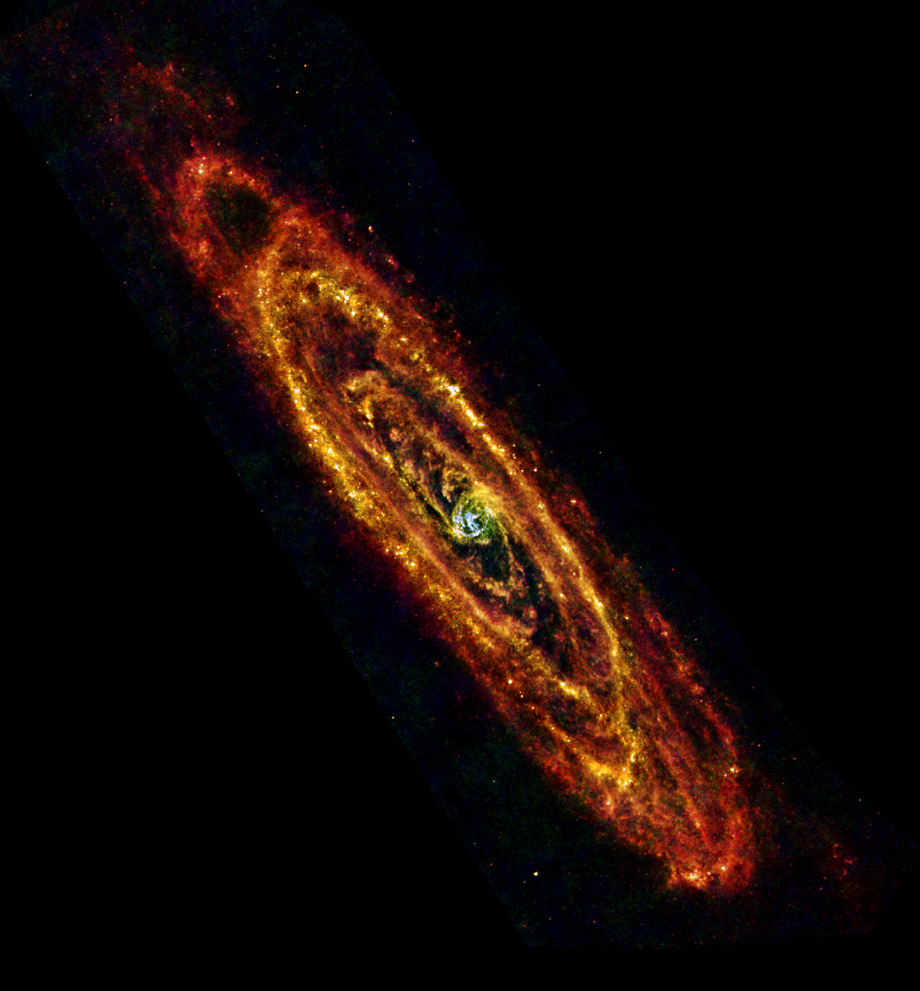
Photo by ESA/Herschel/PACS & SPIRE Consortium, O. Krause, HSC, H. Lin
The Andromeda galaxy is the nearest big spiral to our home galaxy, the Milky Way. It’s actually a bit bigger than we are, and like our galaxy has vast spiral arms where stars are born. This process creates huge quantities of what astronomers call dust—actually a complex organic molecule similar to soot. This dust is warmed by the massive stars forming nearby, causing it to glow in the infrared. The European Space Agency’s Herschel observatory captured this eerie light, mapping out Andromeda’s far-flung arms. This image is taken in the far-infrared, well outside what our human eyes can see. And while astronomers call this dust warm, by normal people standards it’s frigid beyond imagining: The hottest dust you see in this image is actually at a temperature of -232 C (-385 F)!
On April 29, 2013, the Herschel Observatory closed its eyes; it was shut down after running out of the liquid helium it needed to cool its detectors. Its mission lasted more than three years, providing a critical view of the cosmos in the far-infrared.
Runner-up: Hubble Image of an Odd Spiral
The Folly of Humanity
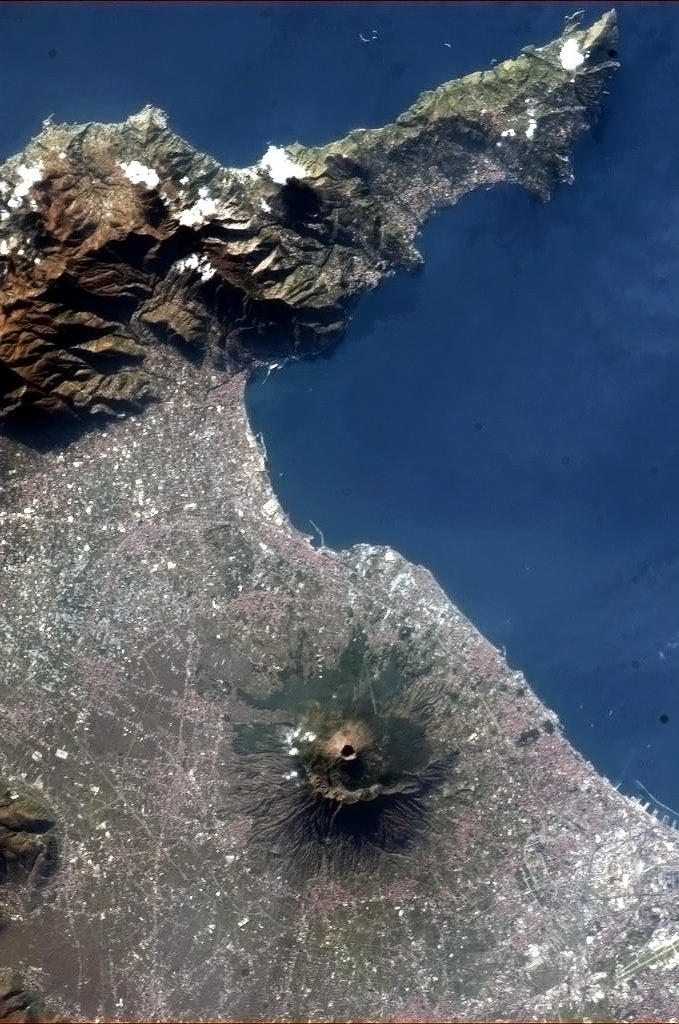
Photo by NASA
In 79 A.D., Mount Vesuvius exploded with the energy of a thousand nuclear bombs. It killed something like 16,000 people as rock and ash poured out of it at a rate of more than a million tons per second. It was so devastating that it has become an icon of the terror of an active volcano.
1934 years later, astronaut Chris Hadfield took this photo of the sleeping monsterfrom over 300 kilometers above it. As you can see, the volcano is located just 9 kilometers (5.5 miles) east of Naples, Italy, with a population of more than 3 million people, making Vesuvius one of the most dangerous volcanoes on the planet. I’m fascinated by volcanoes, and I love pictures of them taken from orbit. But looking at this photo, and knowing it erupts on average every few decades, I have to wonder: What are the people who live there thinking?
The Mustache to the Stars
Speaking of Chris Hadfield, the be-mustached astronaut took so many great pictures and did so many amazing things during his six-month stay on the International Space Station that I agonized over which one to include. Somehow, though, I simply couldn’t resist including this video by him. You’ve probably seen it; as I write this, it’s been viewed 19 million times. Still, his cover of David Bowie’s “Space Oddity” is worth watching again. You can get the wonderful backstory behind the making of the video in Hadfield’s interview with Nerdist’s Chris Hardwick. Also? Go read Hadfield’s book. You’ll be better for it.
Year of the Comet, Part 1
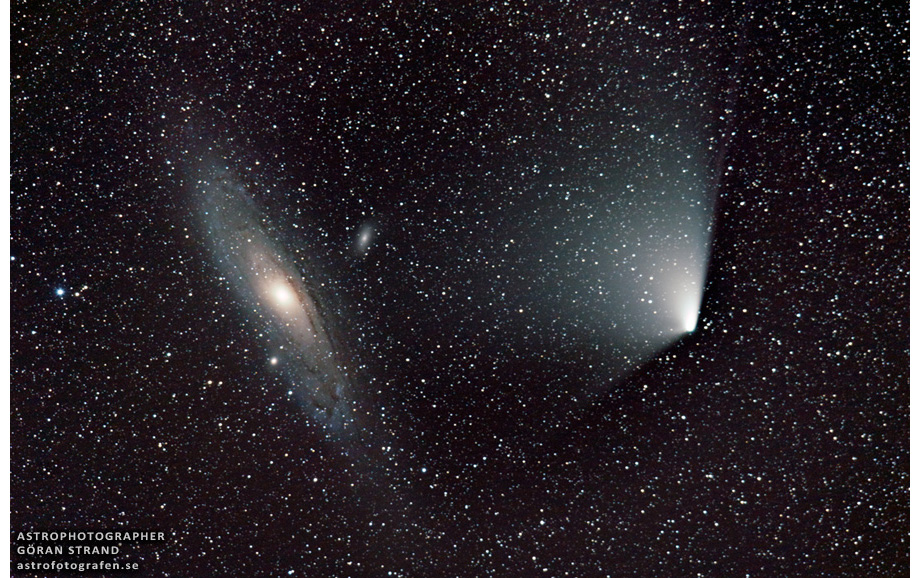
Photo by Göran Strand
2013 saw a barrage of comets invading the inner solar system, but two stood out among the rest: C/2012 S1 (ISON) and C/2011 L4 (Pan-STARRS). Pan-STARRS came around first, appearing in our skies in the spring. I saw this comet myself over the course of several nights, when it was in the northwest after sunset. I managed to snap a few pics, but nothing like this one by Swedish astrophotographer Göran Strand, who took it on April 4, 2013, from north of Östersund, Sweden. The grace and beauty of the comet are lovely to behold, only amplified by appearing next to the Andromeda galaxy—though that’s a matter of perspective. At the time, the comet was 200 million kilometers away, while Andromeda is 25 quintillion kilometers distant.
Year of the Comet, Part 2
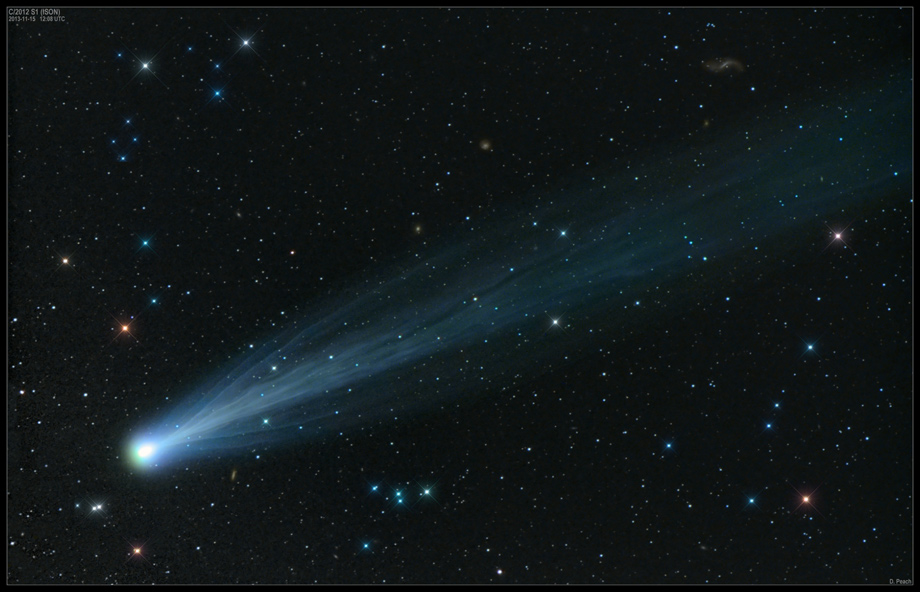
Photo by Damian Peach
The second comet in this year’s list is none other than ISON. It may have disintegrated as it rounded the Sun—honestly, it’s amazing any comet can survive such a brutal gantlet—but on approach it was the picture of a perfect visitor. The image here, by Damian Peach, was taken on Nov. 13, 2013, not long before the end. The tail of the comet stretched for tens of millions of kilometers, and its interaction with the solar wind brought out wiggles and filaments that belied its eventual fate: an expanding cloud of dust as it rounded our star.
Runner-up: The Comet and the Galaxy
The Sound of Thunder Over Russia
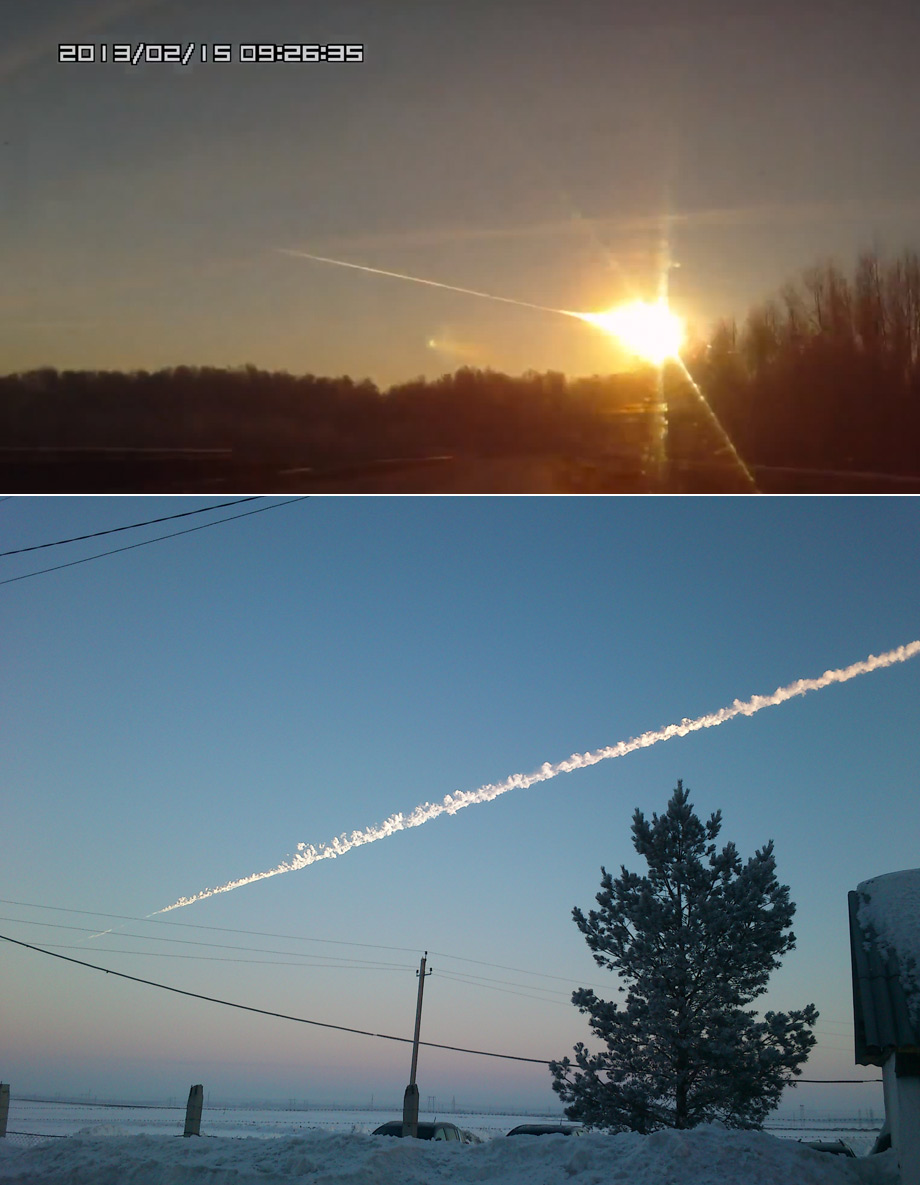
Photo by Евгений Славенков (fireball, top); Константин Кудинов (vapor trail, bottom)
On the morning of Feb. 15, 2013, residents of the Russian city of Chelyabinsk got a very rude awakening: the flash of light and thunderous impact of a 19-meter-wide, 12,000-ton asteroid detonating in our atmosphere as it rammed through the air at more than 70,000 kilometers per hour.
The heat began to melt the asteroid’s rocky material and blow it off when it was still nearly 70 kilometers above the ground, leaving a long vapor trail across the sky. Its huge energy of motion was rapidly converted into light and heat, so sudden it was by all definitions an explosion, the equivalent of half a million tons of TNT detonating. The shock wave swept downward, taking nearly a minute to reach the heavily populated city of Chelyabinsk, where it slammed into buildings, shattering windows, and injured more than a thousand people (mostly due to flying glass). Small bits of the asteroid rained down over the countryside, but one chunk a half-meter across and weighing 570 kilograms slammed into a frozen lake, where it was later recovered. That will prove a boon to scientists studying impacts.
The Chelyabinsk impact may have been the single most important astronomical event of the year. It was a sharp reminder that the Earth sits in a cosmic shooting gallery, and we need to take the threat of asteroid impacts seriously.
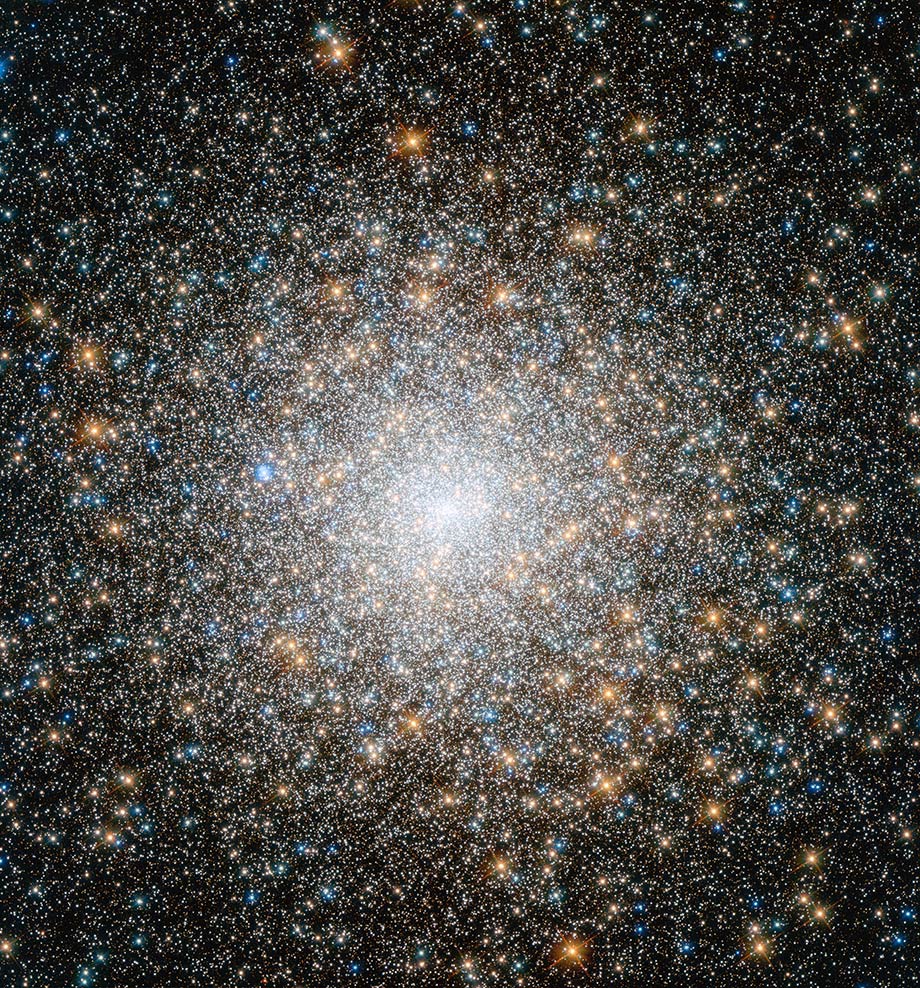

No comments:
Post a Comment